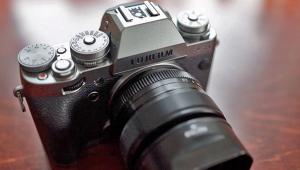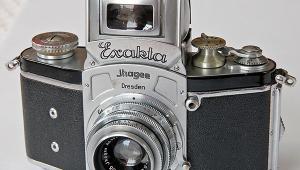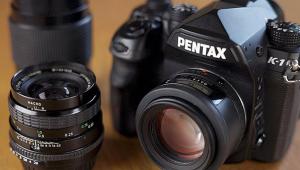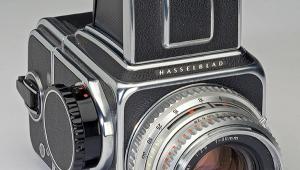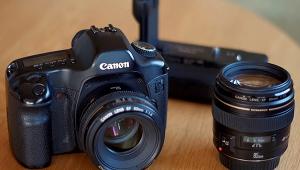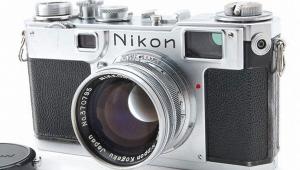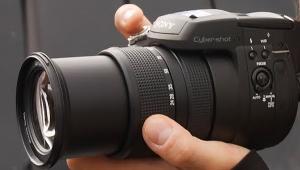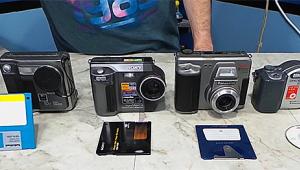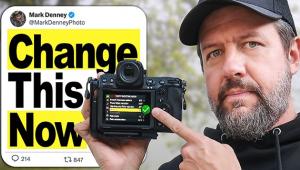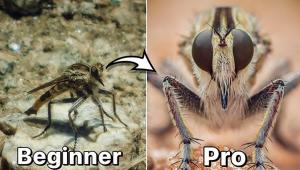Classic Cameras; Samoca 35 LE; One In A Line From Sanei Sangyo
The Samoca 35 LE definitely wants to be taken seriously. The box is a classic piece of high 1950s design, and proudly announces "Exposure Meter Built-In" and "Lens - F 2.8." Open it up and there's a really classic leather ever-ready case with metal-rimmed, red velvet-lined removable top, so you can use the camera in the half case. Or you can take it out: both the case and the camera have strap lugs.
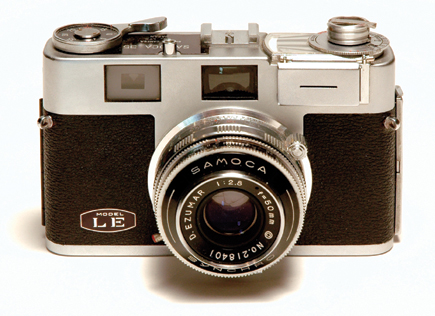 |
|
|
Out of the case, it all looks suitably gadgety. On the front, there are three windows: rangefinder patch, range-viewfinder window, and selenium meter cell with slotted trapdoor (down for high range, up for low range). The fixed, coated 50mm f/2.8 D-Ezumar appears to be a triplet; it is in a rectilinear focusing mount from infinity to 3 ft (no meter markings). The Samoca-Synchro shutter (synchronized for bulb and electronic, with a selector lever on the bottom) offers the old shutter speed sequence of 1-2-5-10-25-50-100-300. Apertures (nonlinear, but click-stopped at full-stop rests) go down to f/22.
On top, on the left, there's a completely non-coupled meter, with the rewind crank in the middle. Set the film speed in ASA
(6-800) or DIN (3-30); follow the needle position to the dial; and set either the "Open" (red) index or the "Close" (black) index to the appropriate point, according to whether the metering trapdoor is open or shut. Read the speed/aperture combinations and set as needed.
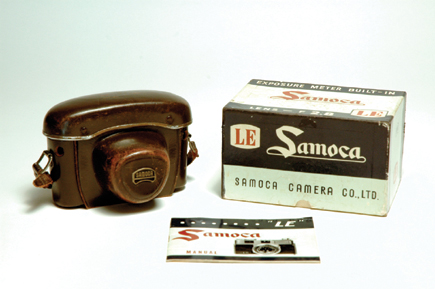 |
|
|
Apart from the meter, the top plate sports an accessory shoe (without flash contact--that's via a PC nipple on the lens); the shutter release, threaded for a standard cable release; and a manually reset additive frame counter in the center of the wind-on lever.
The counter furnishes the only real surprise on the camera. You wind on your two blank frames; set zero; wind on; and find first, that the counter is reading 20, and second, that the shutter won't fire. That's because it's a double-stroke wind on, like an early Leica M3, a singularly infuriating feature if you are used to single-stroke wind ons. Wind on a second time and the counter reads 1.
Otherwise, it's all pretty easy to figure out. To open the back door for loading, there's a pull-up tab on the end of the door. There's a rewind button on the bottom. Focusing is a minor surprise, in that at infinity the focusing tab is at about 2 o'clock, as viewed from the front, while at the closest distance, just under 3 ft (probably 90cm), it is at about 5 o'clock. There's a standard 1/4" tripod socket.
The view through the bright-line finder is ordinary enough: no auto parallax compensation, just a couple of indicator lines for 6 ft and closer, but as the viewfinder is directly over the lens, it's easier and more accurate than many. The rangefinder patch is soft-edged, but bright enough; the rangefinder base is a mere 34mm or so, reduced to an effective 25mm or less by a viewfinder that is about 3/4 life size. The shutter is on the quiet side of average for a leaf shutter, which means that it is very quiet indeed: not as quiet as the almost-silent Ilford Advocate, my personal benchmark for shutter noise, but a lot quieter than even the legendary Leica.
For a company that only made cameras for a decade or so, Sanei Sangyo certainly crammed in a lot of models. The original Samoca 35 ('52) had a flash sync nipple but no accessory shoe; the 35-II ('53) added the accessory shoe; the 35-III and 35-IV (both '55) were improved in various ways. The Super in '56 was the first to sport a rangefinder, and has a wonderful sort of art deco mechanical design reminiscent of a Wurlitzer; a meter was apparently added the following year, with no change in model name. The LE was a much more modern and streamlined camera, introduced in '57; it was followed by the M35 ('58), 35J ('61), and MR ('61). I suspect (though I do not know) that not all of these had rangefinders. In addition to all this, there was a twin-lens Samocaflex which looked rather like the Super with a second story.
The Super and the TLR are easily the most collectible, principally for their bizarre appearance, but the LE has its fans and I have seen people ask as much $120 for non-working models, though this seems excessive to me. I'd have thought that a fair price for this one might be rather over $100, given that it is complete with case, box, and instruction book, cosmetically excellent, and in good working order apart from a fractious meter cell trapdoor (a slightly bent hinge pin). Even the meter seems to work, though I don't think I'd rely on it for slides. On the other hand, I can't say that I'd pay much more than about $50 for it myself, not least because I have far too many cameras already.
Well, is it actually usable? Hmmmm. A lot depends on your definition of "usable." The picture quality is about what you would expect from a camera of this vintage with a mediocre lens, e.g., not too bad by f/8 or so but distinctly "iffy" at full aperture. As a happy-snap camera for color, or a nostalgia box for black and white, it's OK. At least, it would be if you can get used to that infuriating double-wind system. Personally, I'd be inclined to leave it to the collectors, or to those who take a perverse pleasure and pride in making pictures with elderly cameras that frankly aren't capable of high-quality results.
Overall, though, I find two things intriguing. The first is that this is a modestly priced camera, almost half a century old, yet it is still in excellent condition and good working order, even down to the 1-second shutter speed. It feels good in the hand, too: it's a substantial little beast at over 600 g, about 21 oz. Compare that with anything built down to a price today. The other thing is that when this camera was made, it was quite a desirable piece of kit, the sort of thing that a keen amateur might well consider: the equivalent, perhaps, of a 6-megapixel compact today. And yet it has a mediocre fixed lens, zero automation, no meter coupling, and a manually reset frame counter. It is, in a word, primitive. It is humbling to realize what you can buy today, especially on the used market, for a fraction (in real inflation-adjusted terms) of what the Samoca cost when it was new.
For further information on the art and craft of photography from Roger Hicks and Frances Schultz, go to www.rogerandfrances.com.
